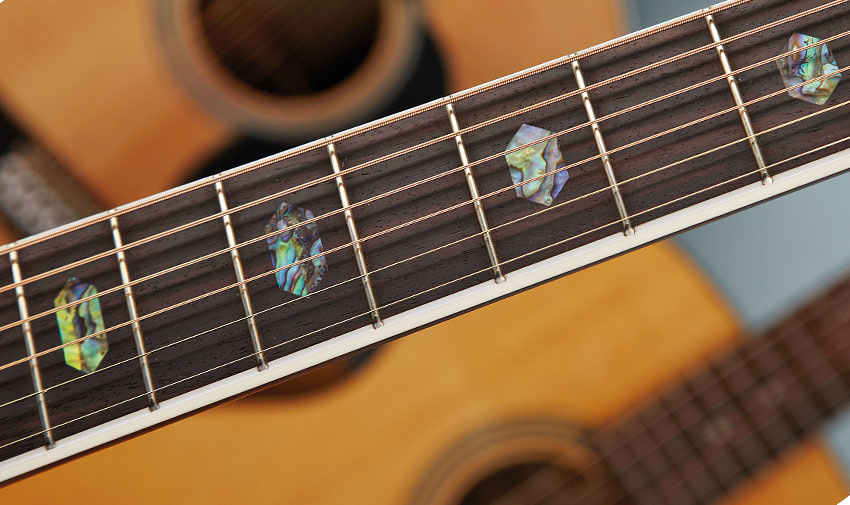MusicRadar Verdict
A little bit of posh at a sensible price with a wide piano-like tonality that's especially good plugged in.
Pros
- +
Fancy looks on a wallet-friendly budget. Fishman Presys+ preamp.
Cons
- -
Low-end lacks a little warmth.
MusicRadar's got your back

Sigma JRC-40E

Preamp

Neck
If we're honest, there can be few of us who don't aspire to own a pucker Martin acoustic. But not all of us feel we can justify the lofty price tag that comes with that premium USA acoustic brand. Sigma, meanwhile, offers quite often historically correct Martin-alikes at very wallet-friendly prices.
Few that we've had in our hands have disappointed, despite the fact they're made in China not Nazareth, Pennsylvania. The range is expanding at quite a rate with over 20 new models this year. So far. Let's look at one of the most impressive models we've yet received in the office...
Build
This Style 40 jumbo cutaway apes the first of Martin's jumbos that appeared in 1985 and in cutaway version two years later. The outline shape was derived from the M series, essentially flat-top versions of the earlier F series archtops but with a deeper dreadnought depth.
"Spending a bit of time with this beauty makes us think that the jumbo is due for a little re-evaluation"
Many historians place the late 1980s and early 90s as the 'golden age' of the jumbo acoustic - Martin had more jumbos in its range at this point than it did dreadnoughts. But as smaller-bodied guitars such as the OM became more popular during the 90s - and as they continue to do so today - the jumbo isn't exactly a rare-bird these days. Still, this review model is one of only four in Sigma's 60-something steel- string range.
Spending a bit of time with this beauty, however, makes us think that the jumbo is due for a little re-evaluation. It's a big ol' bird, though: 405mm (16 inches) across its square-ish lower bouts with a maximum depth of 126mm (4.96 inches).
Its upmarket style means tasteful bling from the gold-plated Grover tuners, the white bound fingerboard with its abalone hexagon inlays, abalone centred soundhole rings, chequered back stripe and triangular volute that apes Martin's old-style headstock splice.
Hats off to Sigma: cosmetically, it's a damn fine job, inside and out. The bone nut and compensated saddle nicely done and setup is easy (almost too low). The neck profile is also pleasing, relatively narrow at the nut with a very electric-like C profile.
Want all the hottest music and gear news, reviews, deals, features and more, direct to your inbox? Sign up here.
Sounds
"There's an impressive modern piano-like response"
It's a big ol' boy, but acoustically the JRC could do with a little more low-end warmth. As it is, there's an impressive modern piano-like response, which makes strummed parts sit beautifully over a darker-voiced acoustic. There's quite an open midrange, too, which helps with its more modernistic sound. As a strummer it sits really nicely in a track, where that tighter low-end works in its favour.
This jumbo also features Fishman electronics - the all-singing-all- dancing Presys+, to be precise, which means that the amplified sound, although typically a little brash, is easily EQ'd to enhance those lows and the sound begins to match the stature of the guitar.
As a starter guitar for the serious student there's little to bemoan here. The JRC is a potentially huge-sounding guitar that not only plays well but packs an impressive punch plugged in.
Dave Burrluck is one of the world’s most experienced guitar journalists, who started writing back in the '80s for International Musician and Recording World, co-founded The Guitar Magazine and has been the Gear Reviews Editor of Guitarist magazine for the past two decades. Along the way, Dave has been the sole author of The PRS Guitar Book and The Player's Guide to Guitar Maintenance as well as contributing to numerous other books on the electric guitar. Dave is an active gigging and recording musician and still finds time to make, repair and mod guitars, not least for Guitarist’s The Mod Squad.
